 Ruwanweli dagoba (Mahathupa) (Great Thupa),
Ruwanweli dagoba (Mahathupa) (Great Thupa),
(Part 1)
Compilation by bunpeiris
1 Concept of Stupa (Dagoba): symbol of Enlightened mind
“It is through the language of archetypal symbols that we reconnect ourselves with the primordial ground from which all human culture has sprung... Among the oldest of architectural forms, the Stupa is a universal symbol of enlightened mind, a familiar sight in all countries where Buddhism has flourished. In the Stupa we find the ancient reliquary monuments once built for kings and heroes transformed into profound expressions of knowledge. Rightly interpreted and understood by both reason and intuition, it mirrors the harmony and perfection of universal principles and invites the human mind to awaken its full capabilities...” Lama Angarika Govinda (1898- 1985) (a)
2 The monumental size of the dagoba
“….two largest dagobas at
Ancient
First published in 1909 Reprint ISBN 81-206-0208-0
3 The largest stupas in
In size a monumental 338 feet high, the Mahathupa covers over an acre & half with a diameter of the circle at the base being 294 feet. It is said that the great stupa at Sanchi, in
4 The Bulldozer & Bulldog of Lanka, the Elephant leads
Mahawmsa, the great chronicle of
Mahawamsa, the Great Chronicle of Sri Lanka 1912 translation by Dr. Wilhelm Geiger
Mahaawmsa , the great chronicle of
Mahawamsa, The great Chronicle of Sri Lanka New Translation (1989) Revision (2005) by Dr. Ananda W. P.Guruge ISBN 955-20-8963-8
The king rejected him. Thereon they offered (to work with) one half less & yet one half less again (at last with) two ammanas of sand. These four master-builders also did the king reject. Then an experienced & shrewd master-builders said to the king:I shall pound (the sand) in a mortar, & then, when it is shifted, have it crushed in the mill (thus will use) one ammanna (E) (only) of sand. And on these words the lord of the land, whose courage was like to Indra’s consented, with the thought; ’There will be no grass nor any such thing on our cetiya. (F)
Mahawamsa, the Great Chronicle of Sri Lanka 1912 translation by Dr. Wilhelm Geiger
And he questioned him saying:’ “in what form wilt thou make the cetiya?” At that moment Vissakamma entered into (& possessed) him. When the master-builder had had a golden bowl filled with water, he took water in his hand & let it fall on the surface of the wateer. A great bubble had had a golden bowl filled with water, he took water in his hand & let it fall unto a half-globe of crystal. He said: ‘Thus will I make it.’ And well-pleased the king bestowed on him a pair of garments worth a thousand pieces of money) & ornamented shoes & twelve thousands kahapanas. (G)
Mahawamsa, the Great Chronicle of Sri Lanka 1912 translation by Dr. Wilhelm Geiger
In agreement with the Sangha & from reverence to the thera’s statement & with his advice, had a medium-sized circle drawn for the cetiya so as to lay the bricks.
With unfailing energy, he had eight vases of gold & silver in the center &, around them, a thousand & eight vases & lots of one hundred & eight garments. He also had eight excellent brick placed separately. (H)
Mahawamsa, The great Chronicle of Sri Lanka New Translation (1989) Revision (2005) by Dr. Ananda W. P.Guruge ISBN 955-20-8963-8
(A) Hero of the nation, King Dutugamunu 161-137 BC,
(B) Taurus
(C) Stones from creeks & rivers. Such stones have no more hidden fissures that will later break under natural pressure. When struck with hammers they shatter instead of cleave.
Foot note from Douglas Bullis
Foot note from Douglas Bullis’s modern text of Mahawamsa
(E) Ammanna is a measure of capacity equivalent to 11x 64 handfuls
Tika is the book of commentaries on the great Chronicle of Sri Lanka
On a visit to Mulgirigala in 1826, colonial civil servant George Turnour found in this library Sri Lanka's Rosetta stone, ola leaf (palm leaf manuscripts) containing the key to translate the Mahawamsa (the Great Chronilcle); Tika (commentary) made it possible for the Mahawamsa to be translated into Sinhala. The translation enabled scholars to study the glorious unbroken history of the island of Lanka since 543 BC to comparatively modern times & correlate with the numerous & varied evidence in the form of inscriptions, great living monuments such as rainwater reservoirs, stupas & temples & archeological ruins.
Ancient
First published in 1909 Reprint 81-206-0208-0
During the period indicated herein by H. Parker, traditional architect master builders of temples & stupas, being villagers didn’t have a pair of slippers on them. Nobody bothered to gift them a pair either. Remark made by bunpeiris.
(H) Mantras are chanted 108 or 1008 or 10008 or 100008 times. Furthermore there is an interesting observation by Archt. Shereen Amendra (b) Quote It is curious that the new vases numbering to 1008, with the eight gold & silver vases add up to 1024. In computer jargon 1024 bytes add upto 1 kiobyte, or 1 K. Was there a possibility for data storage built into Mahatupa, possibly of 1K capacity Unquote
(a) This quotation from Lama Govinda gives us a taste of why Stupas were built and what they signify now and in former times. They are the most fascinating structures on the planet. Their development mirrors that of our cultures, and their transformation stands as a witness to the changes in our philosophical concepts
Lama Anagarika Govinda was born Ernst Lothar Hoffman in Waldheim, Germany (old kingdom of Saxony) in 1898, the son of a German father and a Bolivian mother. Folowing a stint of two years in the German army during World War I he was invalided owing to tuberculosis & discharged from the army. During 1920-1928, most possibly for health reasons, he lived on the
(b) Beyond the Seeing Eye: The Mahathupa of Lanka by Archt.Shereen Amendra ISBN 978-955-50098-0-5
Quote Forward Shereen Amendra, through the comprehensive documentation of her multi disciplinary investigation in a hitherto unchanrted subject, has provided us with fascinating thesis surrounding the Ruvanveli Seya, one of the great monuments of Sri Lanka. Unquote. Quote book cover. This book brings to light a new interpretation on an ancient record, which has lain hidden because the world neither understood or realized that such mind boggling technology known to present generations only recently. Unquote









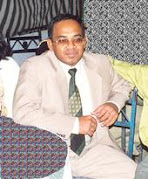













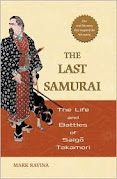


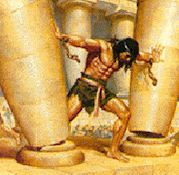










































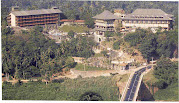








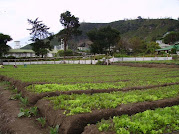














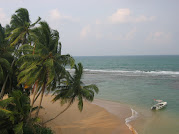












0 Comments:
Post a Comment